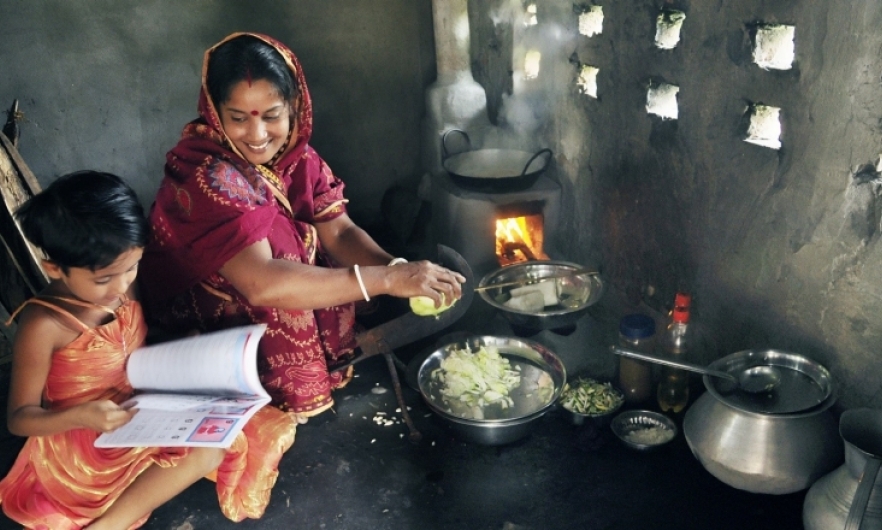EHE Researcher Finds Better Way to Measure Toxic Emissions from Indoor Cookstoves
Study on estimating residential air exchange rates in rural Bangladesh using two-field model results in more accurate results

Source - World Bank
In many parts of the developing world, people use biomass products like wood, coconut husks, cow dung, and coal as cooking fuel in indoor cookstoves. Burning these products emits small particles and gaseous pollutants. New research has found a more precise way than traditional methods to measure exposure to these pollutants.
Emissions from cookstoves have often been estimated indirectly in residential settings by first estimating the ventilation rate, or air changes per hour (ACH) in these homes. ACH is the number of times per hour that fresh air from outside replaces the air in an enclosed space.
Previous cookstove studies in rural areas around the world used a one-compartment model to estimate the ACH from the decay of the pollutant released very near to the cookstove.
“Our study shows that obtaining the ACH from the decay curve of concentrations in the near vicinity of the pollutant source will lead to significant over-estimates,” says Professor Gurumurthy Ramachandran. “In other words, those studies indicate that polluted air is replaced by fresh air at a rate far higher than it actually is.”
We talked to Ramachandran about the research and its implications.
Why did you want to evaluate measurements of air exchange rates?
The ACH values in previous studies were unrealistically large and could not possibly reflect poorly ventilated rural Bangladesh residences. Such values are not observed even in the relatively well-ventilated homes in the United States and European Union countries. So, we wanted to figure out why such large values were being reported.
The revised methodology proposed by our team can be used by WHO to develop more appropriate emission targets for cookstoves.
Tell us more about your methods.
We realized that the previous estimates came from using a mathematical model that was not really suited for this purpose. The one-compartment model assumes that the levels of the pollutant are the same everywhere inside the residence.
We know that this does not reflect reality. For example, the pollutant concentrations are much higher near the cookstove inside the kitchen compared to the living room.
Our paper uses a two-compartment model for estimating ACH values that are accurate and realistic. We used a two-box model that divided the residence into two areas, the more polluted area around the cookstove and a less polluted area elsewhere in the home was more reflective of actual conditions. This different model provides more accurate estimates ACH values, closer to what we expected.
The original ventilation rate estimates were the real surprise. Our work has provided estimates that are more in line with our intuition and expectation. - Gurumurthy Ramachandran
Are there potential or immediate real-life applications?
Currently, only a small percentage of homes in the developing world meet the WHO guidelines for the emission of these fine particles. The WHO uses these estimates of ventilation rates to recommend guidelines for the amount of pollutants that can be emitted by cookstoves. Given the findings of this work, these estimates need to be re-evaluated. Using the newer model would be a more appropriate approach in the estimation of ACH. It is reasonable to expect that this re-evaluation will lead to even more stringent targets for emission rates from cookstoves.
What happens next?
We expect that WHO will take notice of this research and revise their approach to recommending emission targets for cookstoves.
Did anything surprise you about the results?
The original ventilation rate estimates were the real surprise. Our work has provided estimates that are more in line with our intuition and expectation.
Our paper is challenging the ACH values in papers dating as far back as the 1980s. So, there may be initial skepticism, which is as it should be. But I am confident that eventually, people in the field will agree with these findings.
